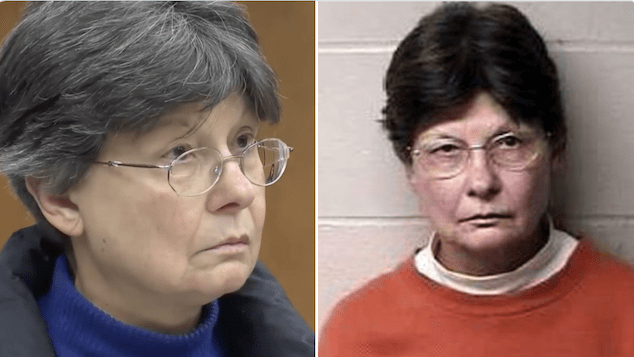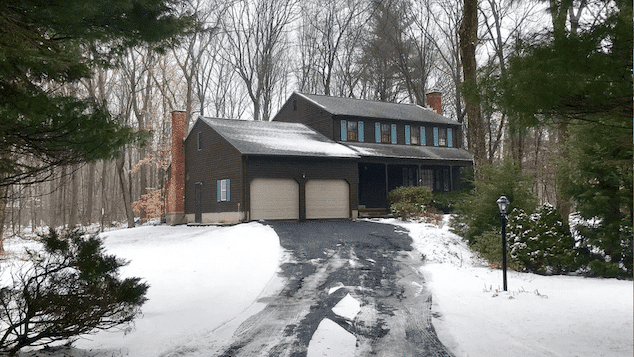

Linda Kosuda-Bigazzi who’d pleaded guilty to killing her UConn professor husband, Dr. Pierluigi Bigazzi, found dead hours before sentencing. Her death was described as a natural passing. Wife had agreed to reduced first degree manslaughter charges and was looking at 13 years behind bars.
A woman who previously pleaded guilty to the manslaughter of her 84-year-old husband and hiding his body in their basement was found dead inside her Connecticut home hours before her sentencing hearing.
Linda Kosuda-Bigazzi, 76, was found unresponsive in her home Wednesday following reports that it was not possible to make contact with her, the Connecticut State Police said in a news release.
Once troopers found Kosuda-Bigazzi, she was soon pronounced dead, police said. Police described the wife’s death as an ‘untimely death investigation,’ according to the release.
UConn professor wife earlier this year agreed to plea deal and was facing 13 years behind bars
Kosuda-Bigazzi was scheduled to be sentenced at 2 p.m. in Hartford Superior Court to 13 years in prison for the 2017 death of her husband, Dr. Pierluigi Bigazzi, who was a professor of laboratory science and pathology at UConn Health.
In addition to the first-degree manslaughter plea, Kosuda-Bigazzi pleaded guilty to first-degree larceny after authorities learned that she was collecting her husband’s paychecks for months after she had killed him. At the time the husband’s ‘decomposing’ body lay wrapped in a rug, hidden in the basement, FOX61 reported.
Upon the discovery of the husband’s body, Bigazzi’s wife of 40 years, Linda Kosuda-Bigazzi, was charged with murder and tampering with evidence and was arrested on a $1.5 million bond, according to NBC.
Rather than continue to fighting the charges and go to trial, Kosuda-Bigazzi earlier this year agreed to a plea deal of first degree manslaughter and spending up to 13 years behind bars during sentencing which would have taken place on July 24, the day of her passing.

$46K was collected in joint checking account as victim’s body lay hidden
‘The passing of Mrs. Kosuda-Bigazzi was not anticipated,’ Patrick Tomasiewicz, Kosuda-Bigazzi’s defense attorney, told USA TODAY in a statement on Wednesday. ‘We were honored to be her legal counsel and did our very best to defend her in a complex case for the past six years. She was a very independent woman who was always in control of her own destiny.’
Kosuda-Bigazzi pleaded guilty in March to killing Dr. Pierluigi Bigazzi sometime in July 2017, hiding his body in the basement until police found him in February 2018 and depositing her husband’s paychecks into the couple’s joint checking account months before the grisly discovery.
A total of $46,000 had been deposited to the joint account, according to WTNH-TV.
Burlington police found Dr. Bigazzi’s body during a welfare check at home, which was called in by UConn Health. The medical examiner in Connecticut determined that Dr. Bigazzi died of blunt trauma to the head.
Bigazzi reportedly worked for the University of Connecticut’s medical school for more than four decades. He was a trained internist specializing in immunology research and taught pathology and oncology to medical students.
Kosuda-Bigazzi allegedly wrote in a journal how she killed her husband with a hammer in self-defense, the Hartford Courant reported, per court records. In the note, Kosuda-Bigazzi details how she struck him with a hammer during a brawl that began when Bigazzi came at her with a hammer first, the outlet stated. The argument began because she told her husband about work she wanted him to do on their deck.
Before the guilty plea, the case had been pending for six years, Hartford State’s Attorney Sharmese Walcott’s office said in a March news release.
Tomasiewicz told USA TODAY in a statement in March that his client decided to forgo a trial and enter a plea on reduced charges because she ‘wanted the book closed on her case.’
‘The death of her husband was a tragedy,’ Tomasiewicz’s statement said. ‘We fought a six-year battle for her on a variety of constitutional issues and although we wanted to continue to trial our client instructed otherwise.’






